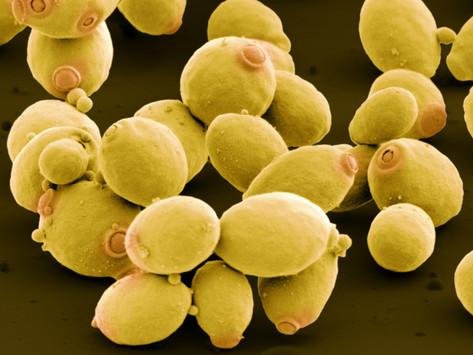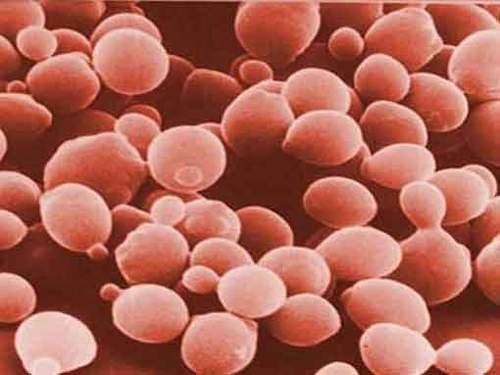Classification and Morphology of Yeast
Hello steemian Classification and Morphology Khamir - Kamir is one of the microorganisms belonging to the class of fungi belonging to the unicellular. Vegetative reproduction in yeasts primarily by means of perching. As a single cell yeast grows and multiplies faster than a mold that grows with filament formation.

Image source [1]
Khamir is very easily distinguished from other microorganisms such as bacteria, yeasts have larger cell sizes and different morphologies. Whereas with protozoa, yeasts have stronger cell walls and do not do photosynthesis when compared with algae or algae. Compared with molds in the breakdown of the chemical component of the yeast, it is more effective to break it down and more surface area and the volume of the result more.[1]
The classification of yeast
Scientific classification:
- Kingdom: Fungi
- Phylum: Ascomycota
- Sub: Pezizomycotina
- Class: Saccharomycetes
- Order: Saccharomycetales
- Family: Saccharomycetaceae
- Genus: Saccharomyces
- Species: Saccharomyces cerevisiae
Saccharomyces cerevisiae is classified as Ascomycetes, its ovum cell shape with a diameter of 5-10 micrometers.
This yeast can be cultivated easily, its generation time is short, it can multiply within 1.5-2 hours at 30 ° C, its production is fast and the maintenance of some specimens at low cost. Often used in industries such as beer, bread and fermented wine. The growth of yeast through the 4 phases is strongly influenced by the nutrients available in the medium that is the lag phase or also called the grace phase where bacteria still adapt to the surrounding environment, logarithmic phase (PK <50%), stationary phase (PK = 50%) and phase of death (PK> 50%).

Image source [2]
Morphology of Khamir
According to the morphology, the yeast is divided into 2, namely:
True Khamir
Basically, the true yeast group belongs to the Ascomycetes class. True yeast has spores. Included in this group are the species Saccharomyces, Schizosaccharomyces, Zygosaccharomyces, Pichia, Hansenula, Debaryomyces and Hanseniaspora.
While in the real yeast group type this species commonly used in industry is Saccharomyces cerevisiae that is for making bread, alcoholic beverage, glyserol and invertase enzyme.Kamir Liar
This wild yeast group is a group of yeasts that have no spores. This wild yeast group is expected to grow and some are not expected. Included in this wild yeast group are Candida, Torulopsis, Brettanomyces, Rhodotorula, Trichosporon, and Kloeckera.
Taking into account the very reactive and diverse activities of the yeast group on foodstuffs, it can be said that yeast has great potential besides being a fermentation agent, can give a very significant change in taste, aroma and texture of the food. As we see in addition to making alcoholic beverages and drinks, or from fermented vegetables and fruits in general the use of yeast in developing food products. [2]
However, on the other hand, yeast can also cause damage. For example, yeasts have little resistance to warming and most of the yeasts will be killed at 60 ° C. If canned food is rotten due to the growth of yeast, it can be suspected that the heating of the food is insufficient or the cans have leaked.
In general, this a rottenness due to yeast accompanied by the formation of alcohol and CO2 gas that causes cans become bloated. The yeast can decay the canned fruit, jam and jelly and can inflate the cans due to CO2 production. Like molds, yeasts that grow in heated-treated foods do not cause disease in humans.
This good post @lontem l like this..
Thank you @mawardi
Nyan ka bereh.. Untuk peugoet kueh..